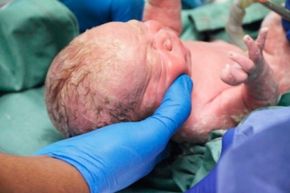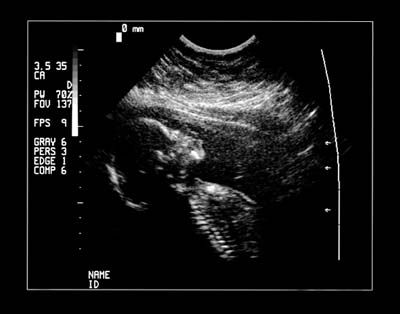The fetus spends the final four to six weeks of pregnancy gaining weight in preparation for his entry into the world. The weight gain gives the baby "the energy stores to insulate birth, so the child doesn't get cold, and to have enough energy in the fat to survive the first day or two after birth until hunger occurs and the connection between sucking and no longer being hungry is made.
"Typically babies will lose up to 10 percent of their weight in the first couple of days after their birth. At that point they figure out that the pain in their bellies will go away if they suck," explains Dr. Joshua Copel, professor of obstetrics and gynecology and pediatrics at Yale University School of Medicine.
Advertisement
In the weeks just before delivery, the fetus often seems quieter. "It's almost as if there isn't enough space for the baby to wind up and take a real good whack at mom's bladder. Movements are still there, but they're not as large as when there's more amniotic fluid relative to the size of the baby earlier," says Dr. Copel.
The long, complicated process of labor and deliver is believed to be started by the baby herself. When the baby reaches full size she releases hormones that in turn trigger the release of a number of other hormones by the mother that cause the muscles of the uterus to contract. These same chemicals also slow the breathing movements of the fetal lungs, which carry amniotic fluid in and out, which had become regular earlier in the third trimester. During labor, the movements will cease almost completely, then start suddenly and energetically when the baby enters the world.
How does the baby experience the powerful contractions that mark labor? During contractions, "we know the pressure goes up to about 40 or 50 mm of mercury when we put pressure catheters into the uterus. But it's all around the baby. If you dive down to 100 feet, you don't feel any pressure as long as you're equilibrated. And the baby, being full of fluid, would be equilibrated. I don't know how to tell if there's discomfort for the baby, because it would be like diving down underwater," explains Dr. Copel.
See how the baby moves through the birth canal next.
Advertisement

